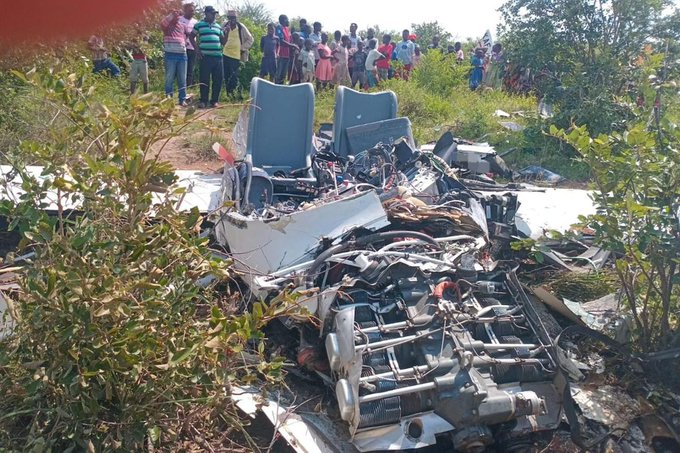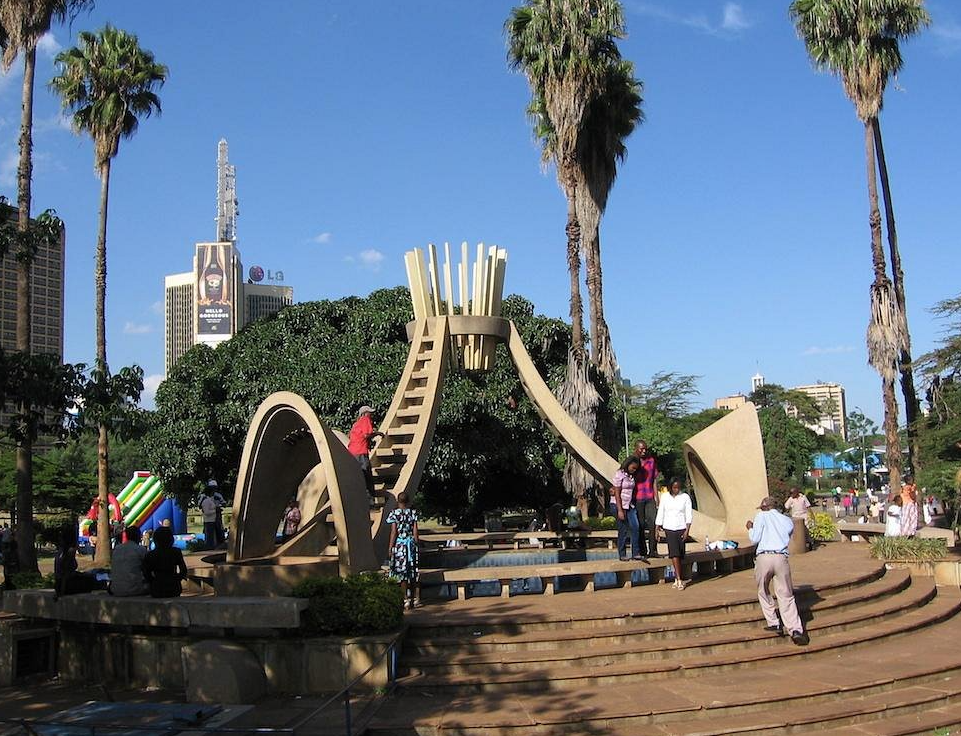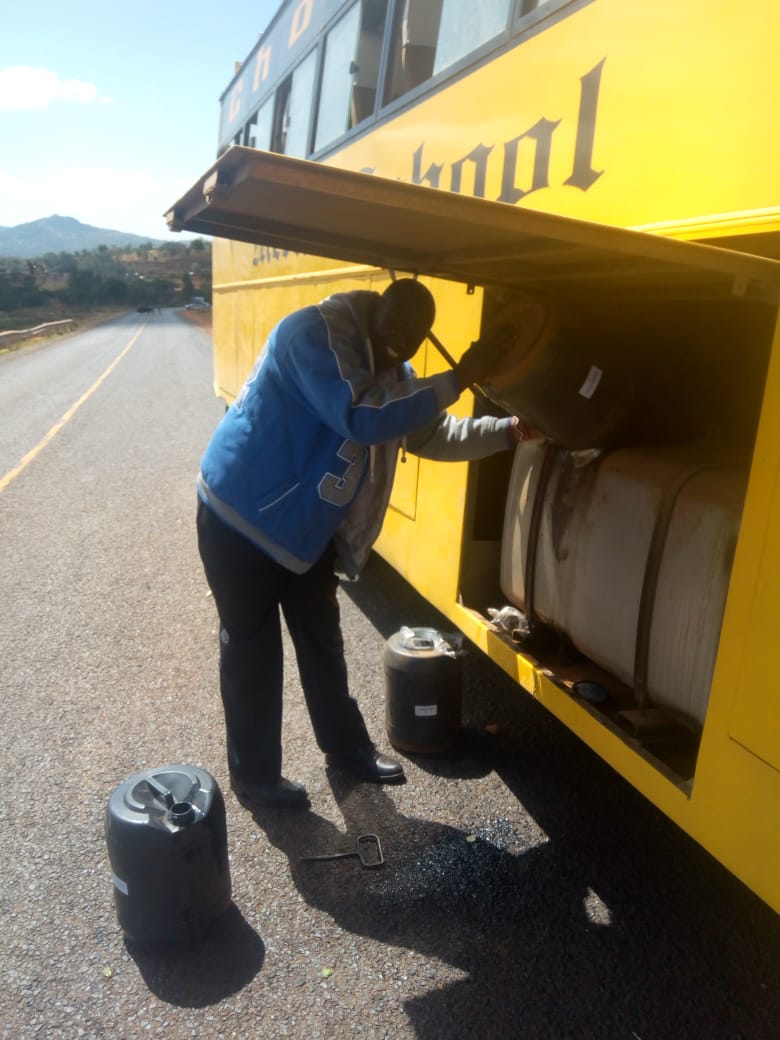The Kenya Air Force is mourning the tragic loss of two pilots after one of its training aircraft, KAF 718, crashed in Kwale County on Saturday, June 14, 2025.
New flight data and insider reports now shed light on the final moments of the doomed plane, which had been on a highly active schedule, including international and regional missions.
The Grob 120A aircraft had flown from Rwanda that very morning, conducted maneuvers over the Kenyan coast, and went down just 27 minutes after being picked up over Mombasa.
Questions now swirl around what went wrong during the final stretch of a mission that spanned thousands of kilometers over several days. The crash not only left wreckage across the remote Ndavaya area but also shattered confidence in the safety protocols governing routine military flights.

The Final Minutes of the Crashed Kenya Air Force Plane
KAF 718 was first spotted at 11:39am near Mombasa, flying at a speed of 200 mph and an altitude of 2,314 feet. A minute later, at 11:40am, it had moved over the Likoni–Shika Adabu area, southwest of Mombasa mainland—still in low altitude flight.
At 11:41am, radar picked up the plane as it approached Shimba Hills National Reserve airspace, descending slightly to 2,000 feet. Its speed stayed the same, indicating the aircraft was either stabilizing for training or starting to show signs of distress.
Then came a puzzling development. By 12:06pm, just before it vanished from radar, KAF 718 had suddenly climbed to 12,100 feet. This jump in altitude could suggest a last-ditch emergency climb or possible instrument malfunction in the plane’s automatic reporting system.
Regardless, this was its last recorded position before it slammed into the ground near Ndavaya, Kinango—a dry inland region 40 kilometers west of Diani Beach.
Witnesses on the ground described a loud engine roar followed by silence, then smoke in the distance. Rescue teams arrived to find debris scattered across a wide radius. Both pilots were pronounced dead at the scene.
A Busy Schedule Before the Crash
Flight records from FlightAware show that KAF 718 had been highly active in the days and weeks leading up to the crash. On the morning of the incident, the plane took off from Kigali International Airport in Rwanda at 08:29am. It reached Mombasa airspace by 10:38am.
The quick turnaround raised eyebrows among aviation experts who say fatigue, mechanical stress, or weather could have played a role.
This wasn’t the aircraft’s first trip to Rwanda. On June 13—just one day before the crash—it was spotted in Rwandan airspace at 3:00am, and later around Nanyuki between 07:22am and 07:54am.
These flights lasted 32 minutes. The aircraft’s log shows repeated operations around Nanyuki, a key military hub hosting Laikipia Air Base. On June 5, KAF 718 flew a 46-minute mission in the same region.
In May, the aircraft was spotted conducting multiple sorties between Nanyuki and Laikipia. Some missions were as short as two minutes, suggesting repositioning flights or touch-and-go training.
Between late March and April, the Grob 120A had at least four other short-range flights over Nanyuki. This consistent activity signals a pattern of intensive training and operational use.
Investigation Underway into the Kenya Air Force Crash
Despite the visible activity logs, the Kenya Defence Forces (KDF) have remained tight-lipped about the exact nature of the missions the plane was performing. A brief statement issued on Sunday confirmed that a full investigation is underway.
“The Kenya Defence Forces regrets the loss of two of its gallant officers. A team has been dispatched to investigate the cause of the crash,” the KDF statement read.
Investigators will focus on the plane’s black box, which records flight data and cockpit communication. Key questions include whether the aircraft experienced engine failure, loss of cabin pressure, or pilot disorientation. Weather data, terrain interaction, and past maintenance records will also be reviewed.
Experts familiar with military aviation say the plane may have been conducting low-altitude navigation or aerobatic training when things went wrong. Others point to the aircraft’s rapid elevation spike just before disappearing from radar, suggesting a potential stall or failed recovery maneuver.
A Nation Waits for Answers on the Crashed Kenya Air Force Plane
The crash has reopened discussions about safety standards, pilot fatigue, and aircraft maintenance within the Kenya Air Force. While the Grob 120A is generally considered a reliable training aircraft, its intense deployment schedule may have pushed it beyond safe limits.
As families grieve and fellow officers mourn their comrades, the public wants transparency. The Kenya Air Force is under pressure not just to explain what went wrong, but also to ensure no such tragedy occurs again.
For now, the remains of KAF 718 lie in the dust of Kwale’s interior—its twisted metal a reminder of lives lost in service and questions still unanswered.








































